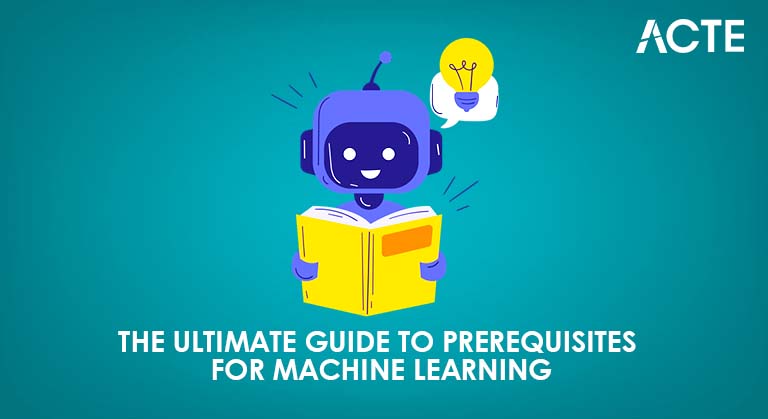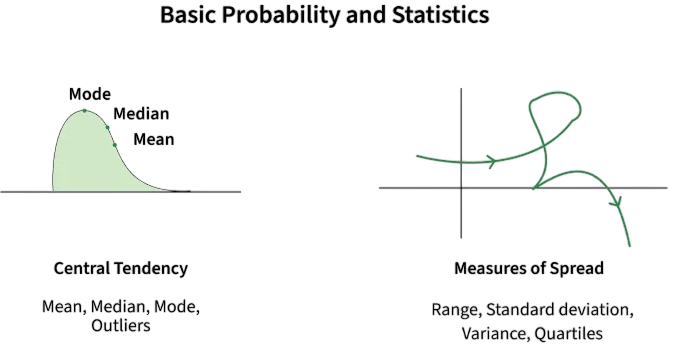
- Introduction to Prerequisites for Machine Learning
- Basic Mathematics Required
- Statistics and Probability Fundamentals
- Linear Algebra and Calculus
- Programming Languages (Python, R)
- Data Handling with Pandas and NumPy
- Understanding Algorithms and Models
- Basic Knowledge of Databases
- Familiarity with Tools and IDEs
- Conclusion
Introduction to Prerequisites for Machine Learning
Machine Learning (ML) is a subset of Artificial Intelligence (AI) that enables systems to learn from data, identify patterns, and make decisions with minimal human intervention. As data continues to grow in volume and complexity, the demand for machine learning skills has soared across industries. Machine Learning Training equips professionals with the expertise to turn raw data into intelligent insights and automated solutions. Whether you’re aiming for a career in data science or simply want to automate intelligent processes, mastering ML is a valuable step forward. This guide outlines the fundamental skills and knowledge areas you need to start your prerequisites for machine learning journey from mathematics to programming tools, from learning resources to roadmap planning.
Ready to Get Certified in Machine Learning? Explore the Program Now Machine Learning Online Training Offered By ACTE Right Now!
Basic Mathematics Required
Statistics and probability are indispensable for developing, interpreting, and validating machine learning models. Descriptive statistics: Mean, median, variance, and standard deviation are essential for understanding datasets. Inferential statistics concepts like p-values, confidence intervals, and hypothesis testing allow you to make conclusions about data samples, which can be further refined using ensemble methods like Bagging vs Boosting in Machine Learning to reduce variance or bias in predictive models. Probability theory: Supports algorithms that involve prediction under uncertainty. It’s crucial in classification problems and in techniques such as the Expectation-Maximization algorithm. Understanding these fundamentals helps avoid pitfalls like overfitting, underfitting, and data leakage.
Statistics and Probability Fundamentals
Statistics and probability are indispensable for developing, interpreting, and validating machine learning models.
- Descriptive statistics: Mean, median, variance, and standard deviation are essential for understanding datasets.
- Inferential statistics: Concepts like p-values, confidence intervals, and hypothesis testing allow you to make conclusions about data samples.
- Probability theory: Supports algorithms that involve prediction under uncertainty. It’s crucial in classification problems and in techniques such as the Expectation-Maximization algorithm.

Understanding these fundamentals helps avoid pitfalls like overfitting, underfitting, and data leakage.
Linear Algebra and Calculus
Linear algebra and calculus provide the language and tools needed to implement and analyze ML models, which are central to Machine Learning a branch of artificial intelligence that enables algorithms to uncover patterns and make predictions from data.
- Vectors and matrices: ML relies heavily on manipulating multidimensional data structures. Operations such as matrix multiplication are core to neural networks.
- Eigenvalues and eigenvectors: Crucial for algorithms like PCA (Principal Component Analysis) used in dimensionality reduction.
- Partial derivatives: Central to backpropagation in neural networks.
- Gradient descent: An optimization algorithm that uses calculus to minimize error functions.
If you’re building your own models from scratch or working with frameworks like TensorFlow or PyTorch, understanding these areas will be invaluable.
To Explore Machine Learning in Depth, Check Out Our Comprehensive Machine Learning Online Training To Gain Insights From Our Experts!
Programming Languages (Python, R)
Programming is now a key skill for building machine learning models. Python is the most popular language in the ML community. Its clear syntax and wide range of libraries, including Scikit-learn, TensorFlow, Keras, PyTorch, pandas, and NumPy, make it great for both prototyping and deployment. Machine Learning Training introduces learners to these essential tools, enabling efficient development of robust and scalable AI solutions. While Python leads in the industry, R remains important, especially in statistical analysis and research. It offers strong packages like caret, ggplot2, and randomForest for specialized data visualization and modeling. Most beginners pick Python because of its versatility and easy learning curve. This has made it the top programming language for machine learning professionals and enthusiasts.
Data Handling with Pandas and NumPy
In machine learning, data preprocessing is very important. Libraries like pandas and NumPy are essential tools for this stage. Pandas is great for data wrangling and manipulation. It offers strong data structures like DataFrames that make it easier to work with tabular data, which are often used in training models like the Support Vector Machine (SVM) Algorithm a supervised learning method that finds the optimal hyperplane to separate classes with maximum margin. Meanwhile, NumPy delivers high-performance support for complex multi-dimensional arrays and matrices along with useful mathematical functions. Together, pandas and numpy libraries form the backbone of Exploratory Data Analysis (EDA). They help data scientists prepare and transform raw data into useful insights that can be easily added to machine learning pipelines.
Looking to Master Machine Learning? Discover the Machine Learning Expert Masters Program Training Course Available at ACTE Now!
Understanding Algorithms and Models
You must familiarize yourself with the algorithms and models used in ML, broadly categorized as:
- Regression: Linear regression, polynomial regression.
- Classification: Logistic regression, decision trees, SVM, k-NN.
Supervised Learning:

- Clustering: k-means, DBSCAN, hierarchical clustering.
- Dimensionality reduction: PCA, t-SNE.
- Agents learn to make decisions via rewards and penalties (e.g., Q-learning, SARSA).
Unsupervised Learning:
Reinforcement Learning:
Understanding the theory behind these algorithms helps you choose the right one based on your problem and dataset characteristics.
Basic Knowledge of Databases
Handling large volumes of data requires proficiency with databases, especially when building interpretable models like Decision Trees in Machine Learning, which split datasets into branches based on feature values to support classification and regression tasks.
- SQL: Learning to write queries helps in extracting and manipulating data from relational databases.
- NoSQL: Knowledge of databases like MongoDB is useful for working with unstructured or semi-structured data.
- Big Data: Exposure to Hadoop, Spark, or cloud storage (AWS S3, Google BigQuery) may be necessary for large-scale ML tasks.
Machine learning projects often start with data stored in databases, making this a critical skill.
Preparing for Machine Learning Job Interviews? Have a Look at Our Blog on Machine Learning Interview Questions and Answers To Ace Your Interview!
Familiarity with Tools and IDEs
Your productivity and ability to debug code can improve significantly with the right development environment, especially when working on advanced topics like Pattern Recognition and Machine Learning, which combine statistical models and algorithmic techniques to identify structures in data and make intelligent predictions.
- Jupyter Notebook: Popular for experimenting with code, visualizing data, and documenting results interactively.
- VS Code / PyCharm: Full-featured IDEs offering linting, debugging, and integration with version control.
- Google Colab: Free cloud-based Jupyter environment with GPU access great for learning and prototyping.
IDE proficiency lets you streamline model building, tuning, and reporting.
Conclusion
Prerequisites for Machine Learning influences many areas. Students can learn new ways to analyze information. Developers can automate complex tasks. People changing careers can find new opportunities. Entering the ML field opens doors. You can create new things. You can make processes run automatically. You can solve tough problems in meaningful ways. For example, ML helps doctors detect diseases earlier. It also powers self-driving cars. It can even suggest movies you might enjoy. Machine Learning Training empowers individuals to build these impactful solutions, transforming industries and everyday experiences. To start, take on small projects. This builds your confidence. It also allows you to practice. Keep learning constantly. The field changes quickly. New ideas emerge frequently. Embrace the challenges you encounter. ML has its learning curves. Working through them is part of the journey. The ML path is very rewarding. It is also quite exciting. The skills you acquire can lead to many great outcomes. You can contribute to important advancements.



